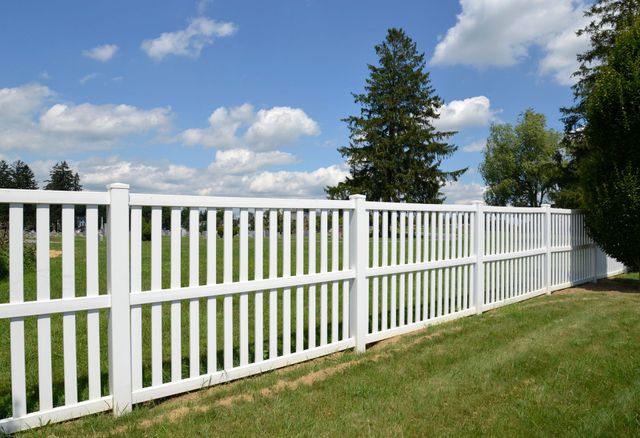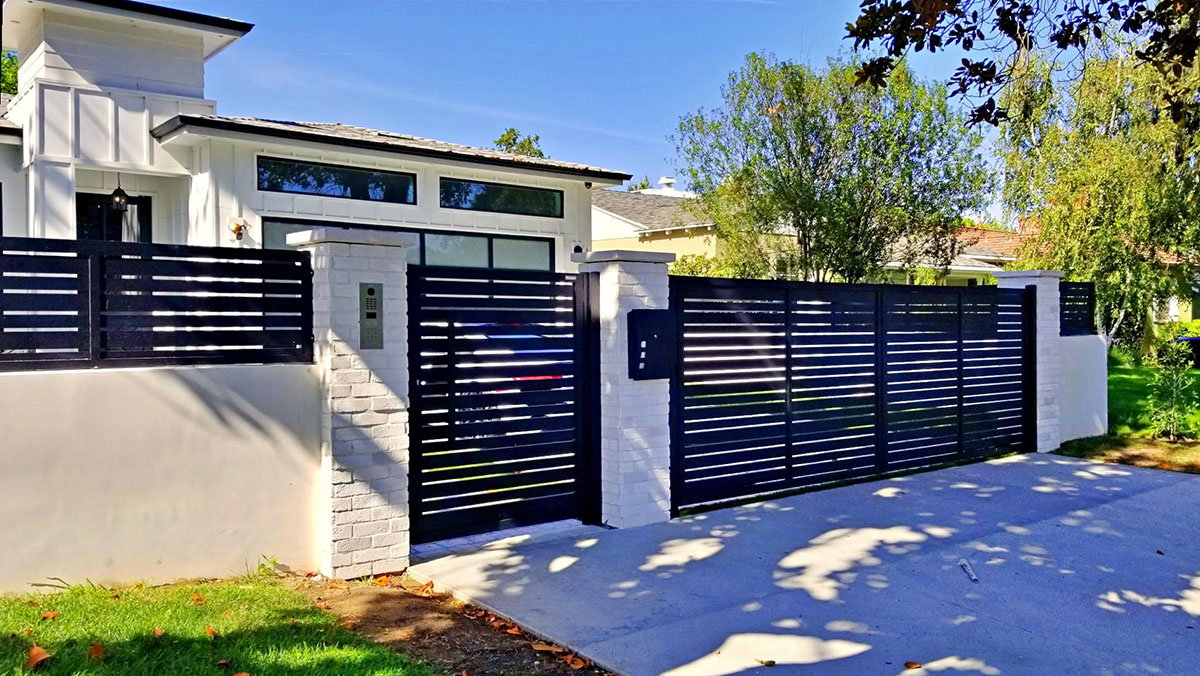All Categories
Featured
Your fence is subjected to various weather year-round, and while it serves as a crucial part of your residential property, it's likewise one of one of the most vulnerable components when it concerns weather-related damage. Rough winds, heavy rainfall, severe temperatures, and UV exposure can all take a toll on your fencing's stability, resulting in tear and put on. There are a couple of steps you can take to secure your fencing and prolong its lifespan. Here are some effective approaches to secure your fence from weather-related damage.
Wood Fences: While timber is a timeless option for secure fencing, it is susceptible to warping, rot, and insect damages, especially in areas with high wetness. Pressure-treated timber or cedar is more sturdy, however regular maintenance is essential to keep it in excellent condition. Vinyl Fence: Vinyl is an outstanding alternative for those trying to find a low-maintenance and weather-resistant fencing. It's unsusceptible wetness, will not warp or fracture in the warmth, and resists fading from UV rays. Metal Fence: Wrought iron and aluminum are durable materials for fencing, however they require a rust-resistant finishing to protect them from rust as a result of dampness. A protective covering or routine upkeep can protect against rust and prolong the life of metal fencings. Composite Secure Fencing: Made from a blend of timber fibers and plastic, composite fences are very immune to weather components, consisting of uv, warmth, and wetness rays. This material offers an equilibrium of durability and aesthetic allure. Selecting a product fit to your climate will give far better defense for your fencing in the long-term.
Seal or Discolor the Wood: Applying a high-grade sealant or tarnish to your wood fence produces a waterproof barrier that protects against wetness from getting in the wood. It also aids shield the timber from UV rays, which can cause discoloration and drying out. Reapply Sealer Routinely: In time, the protective obstacle of your sealant or tarnish can wear down. Relying on your climate, it's a great idea to reapply every one to 2 years to keep the wood secured. This therapy will maintain the fencing's look, protect against rot, and prolong its life-span.
![]()
For additional security, consider utilizing wind-resistant mesh displays or panels in locations where wind is a considerable concern. This added layer can aid minimize the force that the wind applies on your fencing.
Check Water Drainage: Guarantee that the ground around your fence slopes away from the posts. Proper drain enables water to stream away from the fencing, stopping moisture build-up. Mount Drain Systems: In locations where water drainage is a concern, take into consideration including a French drain or gravel around the base of your fencing messages to redirect water away from the framework. Good drain can protect against rot, rust, and various other types of weather-related degeneration.
![]()
![]()
Concrete Footings: Establish fence blog posts in concrete to stop them from loosening gradually as a result of dirt disintegration or shifting ground. Metal Dental Braces: Including steel braces to fence posts can give extra strength and minimize the threat of damaging or leaning. Enhancing your posts makes sure that your fencing will remain in location, even during severe climate.
For wood fences, carefully wash the surface area with a moderate detergent to get rid of dirt and crud. For plastic fencings, make use of a soft towel and cleansing option to stop buildup. For metal fences, check for rust and sand it off before applying a fresh coat of paint. Verdict. Your fence is a vital attribute of your residential or commercial property, and with the best care, it can hold up against the challenges presented by the climate. By picking sturdy products, doing routine maintenance, and reinforcing powerlessness, you can secure your fence from the components and expand its life. Regular examinations, using safety coverings, and taking actions to manage wetness and wind exposure will certainly assist ensure that your fence stays solid, functional, and eye-catching for several years to come.
- Select Weather-Resistant Products. The materials you select for your fencing can have a major effect on its capacity to stand up to the components. Different materials are much better equipped to deal with certain weather condition problems. Right here's a failure of how various products hold up versus the weather:
Wood Fences: While timber is a timeless option for secure fencing, it is susceptible to warping, rot, and insect damages, especially in areas with high wetness. Pressure-treated timber or cedar is more sturdy, however regular maintenance is essential to keep it in excellent condition. Vinyl Fence: Vinyl is an outstanding alternative for those trying to find a low-maintenance and weather-resistant fencing. It's unsusceptible wetness, will not warp or fracture in the warmth, and resists fading from UV rays. Metal Fence: Wrought iron and aluminum are durable materials for fencing, however they require a rust-resistant finishing to protect them from rust as a result of dampness. A protective covering or routine upkeep can protect against rust and prolong the life of metal fencings. Composite Secure Fencing: Made from a blend of timber fibers and plastic, composite fences are very immune to weather components, consisting of uv, warmth, and wetness rays. This material offers an equilibrium of durability and aesthetic allure. Selecting a product fit to your climate will give far better defense for your fencing in the long-term.
- Routinely Deal With Wooden Fencings. Securing it from sunshine, dampness, and temperature level variations is important if you have a wood fencing. Wood can absorb wetness from moisture, rain, or snow, creating it to rot and deteriorate. Right here's how you can secure wooden fencings:
Seal or Discolor the Wood: Applying a high-grade sealant or tarnish to your wood fence produces a waterproof barrier that protects against wetness from getting in the wood. It also aids shield the timber from UV rays, which can cause discoloration and drying out. Reapply Sealer Routinely: In time, the protective obstacle of your sealant or tarnish can wear down. Relying on your climate, it's a great idea to reapply every one to 2 years to keep the wood secured. This therapy will maintain the fencing's look, protect against rot, and prolong its life-span.

- Mount Windbreaks. Solid winds can trigger substantial damages to fencings, especially those made of tall frameworks or lightweight products. These all-natural obstacles can help disperse wind, avoiding straight gusts from damaging your fencing.
For additional security, consider utilizing wind-resistant mesh displays or panels in locations where wind is a considerable concern. This added layer can aid minimize the force that the wind applies on your fencing.
- Make Sure Appropriate Water Drainage Around Your Fencing. Standing water is one of the leading sources of fencing damage, specifically for wood fencings. Water can compromise the fence messages, triggering them to rot and degrade much more rapidly. To avoid this:
Check Water Drainage: Guarantee that the ground around your fence slopes away from the posts. Proper drain enables water to stream away from the fencing, stopping moisture build-up. Mount Drain Systems: In locations where water drainage is a concern, take into consideration including a French drain or gravel around the base of your fencing messages to redirect water away from the framework. Good drain can protect against rot, rust, and various other types of weather-related degeneration.

- Trim Overhanging Branches and Vines. Overhanging tree branches and creeping plants can trigger damages to your fencing throughout tornados or high winds. To secure your fencing, trim any type of branches or plants that hang over or near the fencing regularly.
- Enhance Fencing Posts. The stability of your fence greatly depends upon the condition of the blog posts. Fence posts are prone to changing, leaning, and deteriorating, specifically during durations of extreme weather. It's essential to strengthen the posts to preserve stability if your fencing is in a location that experiences high winds or ices up during wintertime. Some ways to enhance your fence articles include:

Concrete Footings: Establish fence blog posts in concrete to stop them from loosening gradually as a result of dirt disintegration or shifting ground. Metal Dental Braces: Including steel braces to fence posts can give extra strength and minimize the threat of damaging or leaning. Enhancing your posts makes sure that your fencing will remain in location, even during severe climate.
- Regular Evaluations and Upkeep. Regular evaluations are essential for recognizing early indications of weather-related damages. Check your fencing after storms or hefty rain to try to find concerns such as loosened boards, drooping articles, or rusted locations. Early discovery of minor issues can conserve you from costly fixings later on. In addition, cleaning your fence occasionally assists preserve its condition. :
For wood fences, carefully wash the surface area with a moderate detergent to get rid of dirt and crud. For plastic fencings, make use of a soft towel and cleansing option to stop buildup. For metal fences, check for rust and sand it off before applying a fresh coat of paint. Verdict. Your fence is a vital attribute of your residential or commercial property, and with the best care, it can hold up against the challenges presented by the climate. By picking sturdy products, doing routine maintenance, and reinforcing powerlessness, you can secure your fence from the components and expand its life. Regular examinations, using safety coverings, and taking actions to manage wetness and wind exposure will certainly assist ensure that your fence stays solid, functional, and eye-catching for several years to come.
Latest Posts
Find Best Vehicle Maintenance Care at Montclare Auto Repair – Expert Care for Your Vehicle
Published May 25, 25
1 min read
How to Know When Your Car Needs Expert Car Repair at Montclare Auto Repair
Published May 24, 25
1 min read
Recognizing Roofing Service Warranties: What Homeowners Need To Know
Published May 23, 25
1 min read
More
Latest Posts
Find Best Vehicle Maintenance Care at Montclare Auto Repair – Expert Care for Your Vehicle
Published May 25, 25
1 min read
How to Know When Your Car Needs Expert Car Repair at Montclare Auto Repair
Published May 24, 25
1 min read
Recognizing Roofing Service Warranties: What Homeowners Need To Know
Published May 23, 25
1 min read